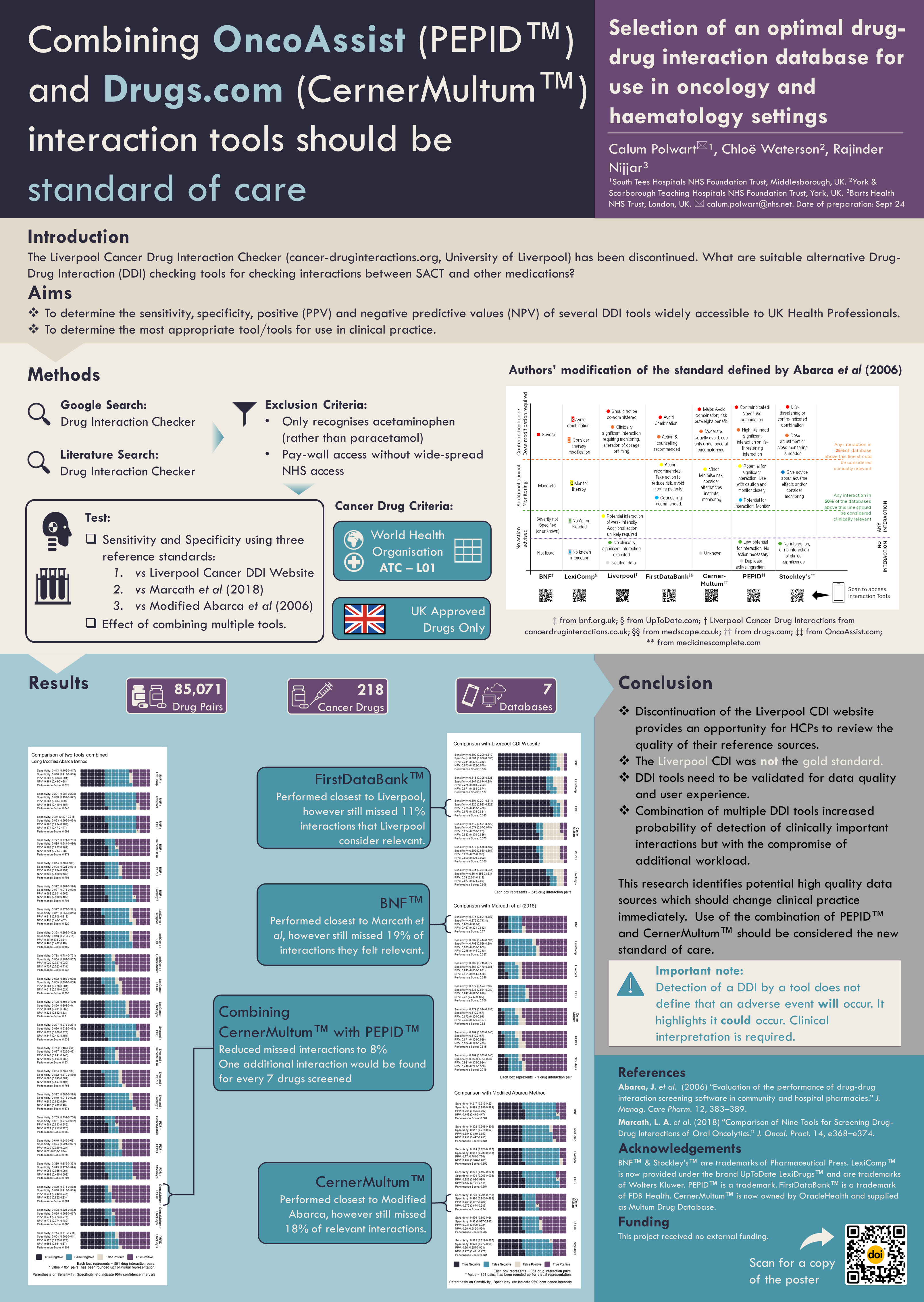I’ve just published a poster and thought I’d share some of the thinking behind it.

Where did the idea come from?
This poster wasn’t my idea. Perhaps it wasn’t really anyone’s idea but two people were pretty key in developing the idea. Chloë Waterson, then working at County Durham and Darlington NHS Foundation Trust and Rajinder Nijjar, working for Guys’ and St Thomas’ and NHS England were the real instigators. We spoke with a few collaborators along the way but these two have become co-investigators on this project because they both asked a question around the same time.
Chloë was first to drop me a note asking if I’d seen that Liverpool Cancer Drug Interaction checker might be being shut down and what did I think about this. That was nearly 18 months ago. And what did I think? Well my initial though was a mixture of “Oh that’s a shame”, “I’m old enough to remember using a book to look up interactions” and “Sounds like its a money issue, someone will sort it”. I did also briefly ponder why that particular tool had become so popular. We briefly spoke about the idea of being able to check what was a good alternative, but did not much more. I did spend a couple of hours studying how the website actually worked and seeing if the data would be available in an archived form if the site was pulled. Anyway, move on a few weeks and Raj sends an email round some colleagues working for NHS England asking what people are using instead. She’d been using UpToDate but was finding problems. Seemingly new interactions surfacing for drugs we’d used together for years and some drugs not being listed (domperidone was her example).
I joined Raj and Chloë together in a Teams call. We tried inviting others who had shown interest on the BOPA Forum but didn’t get any takers. But we had the start of an idea. We wanted to know what was the best alternative. We were still talking as if Liverpool was the gold standard.
We bounced some ideas around about how we could do that. Creating our own test scenarios. Using specificity and sensitivity to measure things. A little searching, followed by more detailed searching revealed we weren’t the first to tackle the question of how good a drug interaction checking tool is. A little more work and we were uncovering papers describing oncology specific tools.
— Content on this website has been produced with reasonable care. However, errors can occur. Opinions change over time. Code that worked at the time of publication may no longer work. Users of all content from this site do so at their own risk.
Reuse
Copyright
Citation
@misc{polwart2024,
author = {Polwart, Calum},
title = {Interaction Checking Tools},
date = {2024-10-11},
url = {https://www.chemo.org.uk/posts/Story-behind-interaction-poster.html},
langid = {en}
}